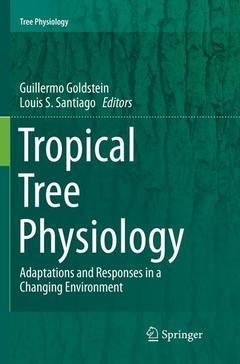Description
Tropical Tree Physiology, Softcover reprint of the original 1st ed. 2016
Adaptations and Responses in a Changing Environment
Tree Physiology Series, Vol. 6
Coordinators: Goldstein Guillermo, Santiago Louis S.
Language: English
Subjects for Tropical Tree Physiology:
Publication date: 04-2018
Support: Print on demand
Publication date: 03-2016
467 p. · 15.5x23.5 cm · Hardback
Description
/li>Contents
/li>Comment
/li>
Physiology and life history traits of unique arborescent tropical growth forms.- Hemi epiphytic trees: Ficus as a model system for understanding hemiepiphytism.- Drought deciduous trees e.g. limestone outcrops in China and Brazil and trees from deciduous tropical forests including dry forests from the Yucatan Peninsula and Puerto Rico. What is unique about these trees?- Flood tolerant trees: many areas of lowland rainforest remain flooded for several months and the water sometimes can cover all the trees.- Stem succulent trees (baobab and other similar stem succulent trees).- Palms.- Mangroves.- Lianas.- Arborescent tree forms near treeline.- Process oriented chapters Hydraulic architecture and water transport Nutrient relations Carbon assimilation, photoinhibition, shade tolerance Tree ring chronologies, global climate change Different spatial and temporal scales

